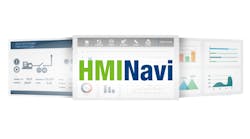Robin Cave is software engineer at Mazak in Florence, Kentucky.
What’s the most innovative or efficient operator-interface technology application you’ve ever seen or been involved with?
How has operator-interface technology benefitted from remote monitoring and connectivity?
Robin Cave, software engineer, Mazak: MTConnect is the state-of-the-art when it comes to remote monitoring and machine-tool connectivity. The beauty of MTConnect is that everyone’s machine, regardless of the brand, is handled the same way, and that makes life so much easier for shops. Owners or managers can monitor their entire shops, including parts and productivity, from one central location instead of walking around and physically monitoring multiple machines, individually. And this connectivity goes both ways.
In addition to machine monitoring, operators can pull a program on any Windows-based machine with a network connection. Consider a shop having to run the same part 20 times. If engineering changes the part, operators can pull that latest program from the engineering server, and they know they are getting the most recent version of the program, which is incredibly important.
Mazak has been involved with MTConnect since the whole thing started, and we’ve been very instrumental in developing the standard.
Can you explain how software development has changed operator interfaces in manufacturing?
Robin Cave, software engineer, Mazak: In addition to software functions like Smooth Machining Configuration (SMC) and 3D Assist and Simulation, the fact that machines are Windows-based makes it much easier to find software developers who can work within that interface platform. For example, Mazak machines have two embedded controllers, and the second computer is the Windows interface that takes care of the human interface, and, because that Windows interface is so tightly integrated into our machines, it opens up more capabilities to more software developers.
Tell us about your company’s state-of-the-art operator-interface technology for manufacturing.
Robin Cave, software engineer, Mazak: Mazak’s state-of-the-art interface is our SmoothAi control. About 80% of the SmoothAi improvements over previous controls were on the PC side, which was geared to the human interface, making it easier, more accurate and more flexible for communicating between humans and the machine. And that’s not just for the operators, it’s for the engineers, as well.
What have been the biggest improvements to operator-interface technology in the past five years?
Robin Cave, software engineer, Mazak: Two of the biggest, most recent, improvements in operator-interface technology for Mazak would be our Smooth Machining Configuration and the addition of 3D Assist and Simulation features to our Mazatrol SmoothX and SmoothG controls.
The SMC provides a graphical interface with sliders, and operators can store 20 or so configurations for different performance envelopes. They can instruct the machine to tighten or loosen corners, run faster or slower, and there are graphical bars with feedback right above the slider that indicate what’s being done to the performance of the machine. It keeps the operator from having to call tech support to ask questions like, “What does parameter L72 do and how does it work?”
As an addition to our Mazatrol SmoothX and SmoothG CNCs, the 3D Assist feature supports shop-floor programmers by allowing them to import a three-dimensional solid model into the control and then write a Mazatrol program by checking different features of the model. Programmers become more capable at the machine by using the touch-screen interface to define shapes and dimensions based on the model.
The additional Simulation feature shows operators what the tools are going to do when the machine runs. They can simulate the entire machine and cutting environment and receive a very accurate and capable view of what’s going to happen before the cycle-start button is pushed, and that helps remove the potential for error and gives operators a lot more confidence when they actually run the part.






